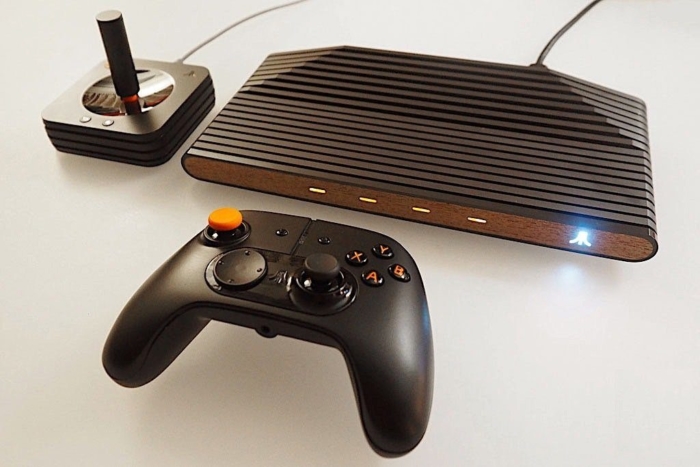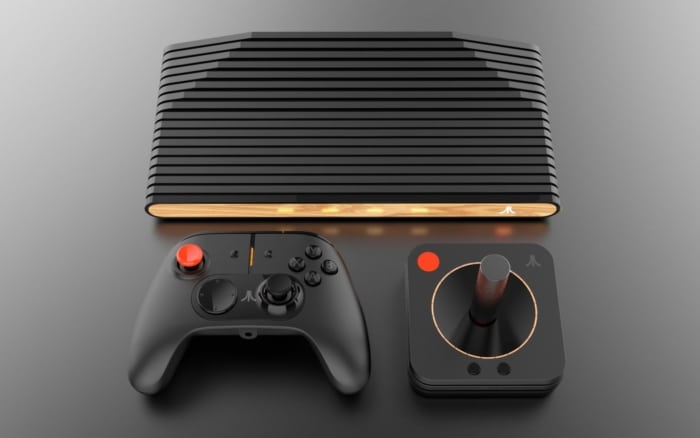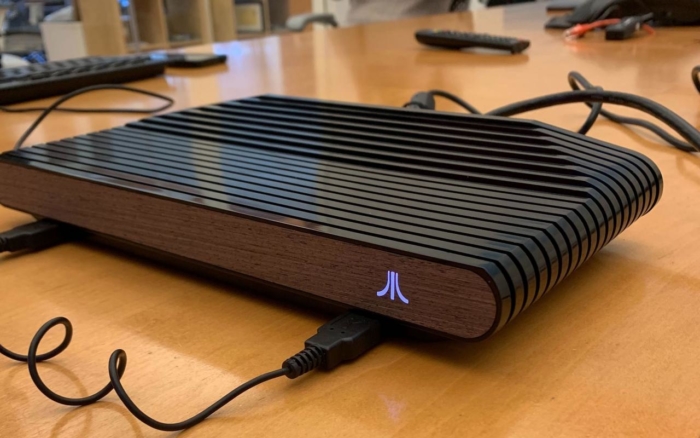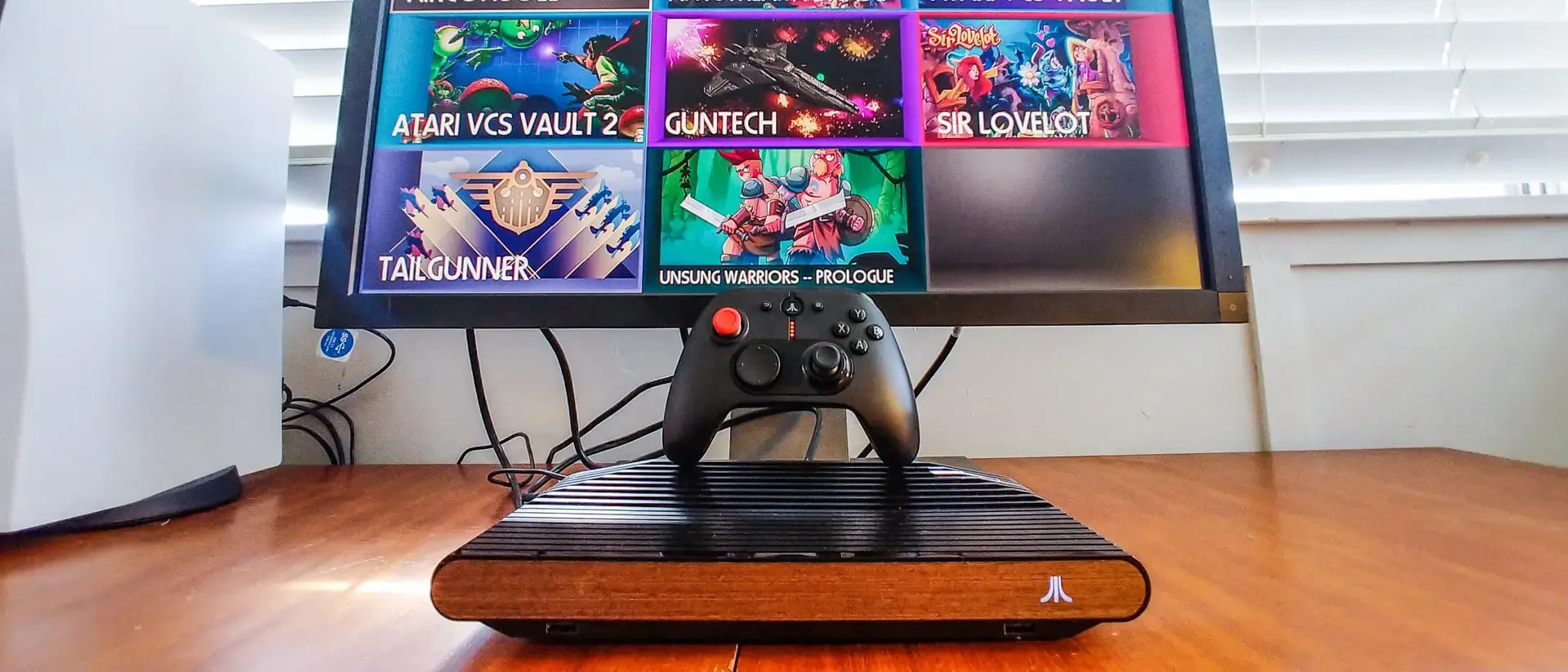The Atari VCS – Part Three
After almost three decades out of the console business, Atari releases a new console to compete with the likes of Nintendo, Microsoft and Sony. Does the new Atari VCS have something special to offer and how did it come about? At UGP we’re looking at the history of Atari and what led to this new machine.
In this final part, it’s time to delve into the creation of the new VCS itself.
Who Are Atari in 2021?
As seen in parts one and two, Atari’s history has been far from simple. The original game company making arcade games that developed the first successful home console crashed and burned in the early 1980s, and the Atari that rose from those ashes managed little of success outside of a middling 16-bit computer for the early 90s. The handheld Lynx couldn’t compete with Nintendo and Sega, the 64-bit Jaguar was unable to keep up either, and in 1995 Atari called it quits on both the home computer and console markets.
Two significant deaths. Is there a third life remaining for Atari to play with?
Infogrames Atari
Anyone playing games in the 1990s and early 2000s would have heard of Infogrames. The French software company was far from a dominating giant in the business, but their logo appeared on enough of the decent titles of the game to stick in the mind—games like the seminal survival horror Alone in the Dark, role-playing series Neverwinter Nights and classic FPS Unreal, for example.
Infogrames grew through acquisition, buying up smaller software houses to stable under their umbrella. Eventually, Atari was one of them, snagged in 2001 from Hasbro Interactive (who, to be fair, were doing pretty much nothing with the brand).
Since then, the number of subsidiaries and side-businesses bearing the Atari name is almost too numerous to believe. There’s Atari Inc, Atari Interactive, Atari SA, and even an Atari Casino sideline looking to make cryptocurrency wealth from gamblers worldwide—ironically, a side of the business that’s probably actually quite close to Nolan Bushnell’s original dream.
It is to Atari SA that we now look, as it is from there that the project known as “Ataribox” comes.

The Ataribox and a New Player
Enter Feargal MacConuladh. Atari can boast a veritable rogue’s gallery of somewhat dubious top-level staff, with Nolan Bushnell’s aggressive tactics and Jack Tramiel’s ‘Attila the Hun’ reputation. It seems they found yet more interesting talent with the new guy.
Feargal Mac (as he is sometimes known) was the vision behind the Ataribox—a new retro-inspired console to put Atari back on the map—and he planned to use crowdfunding to help him.
On the face of it, there’s nothing wrong with this. After all, there are plenty of very impressive things today that only came to fruition through crowdfunding—it’s a very legitimate business model. Sadly, though, it can also be used for ill, and scam products are all-too-frequent.
Take, for example, the USB-stick-on-a-wrist “Stormfly” that came up on Kickstarter from a company called Now Computing. This was essentially a $10 USB stick, preloaded with Linux and wrapped in orange rubber that was being touted as a ‘PC on your wrist’ by the company with a $59 price tag.
Why is that important? Because Now Computing’s CEO was a man called Feargal MacConuladh.
The Ataribox was not his first attempt at selling tech promises on crowdfunding sites. It wasn’t even his first while at Atari, with the similarly dubious Atari Gameband (definitely not the smartwatch you want) also on his resume.
For those who were in the know, Feargal Mac’s crowdfunding projects were to be avoided, so was it really good for Atari to have him as the frontman for this new console?
It seemed Atari realised as much, too, as this quote from Fred Chesnais, Atari CEO, intimates:
“Michael Arzt [has] been with us for more than a year. He’s been pushing the project and coordinating with Feargal. Feargal left the day — we announced we were going live on December 14, and he left on December 13. Nothing else to say.” – Fred Chesnais, VentureBeat interview, 26th March 2018.
“Nothing else to say.” Says a lot.
Feargal Mac was out, Michael Arzt is in, and Ataribox is now Atari VCS.
Crowdfunding Success
The Indiegogo crowdfunding campaign raised over three million dollars for the VCS. It’s an impressive number, and definitely shows that the concept has some life to it. There are definitely people with an interest in the machine, but are there enough?
$3,000,000 looks like a lot of money, but dig just a little deeper and there are only 11,597 backers. Eleven and a half thousand interested people worldwide? Remember, the original VCS sold in the millions and needed those numbers to be considered a success and today the Nintendo Switch has over 89 million sales, of which 1.5 million were in the first week. Of course, Atari isn’t really looking at denting Nintendo’s market share but still, 11,597 starts to look like an extremely small number by comparison.
Plus, back in the 1980s, competing with Nintendo’s market share would have been exactly their intent.
High numbers or not, it’s clear that the Atari VCS campaign was at least successful enough to make it to production—and a lot of that was to do with nostalgia.
The VCS in 2021 (Part 4)
It’s impossible to discuss the 2021 VCS without leaning heavily into the nostalgia element. If you are old enough, as soon as you see a picture of the console, there’s something deep inside that goes “oooooh”.
This is not a product for a new generation of teenage gamers. Of course, some of them might want it, having heard of Atari 2600s from their parents, or digging them out of an old cardboard box from a loft in an exciting treasure hunt, but on the whole, the VCS is designed to make those in their 40s and 50s react to something from their childhood.
It works.

I never owned an Atari 2600, but I saw them occasionally in friend’s houses and was aware of them as part of the culture of computer gaming. I have held that iconic joystick and used it to shoot little pixellated aliens before my base can be destroyed, or hammer bullets into mushrooms trying to get them clear before the centipede comes too low. I have exactly the right level of nostalgia to make this product really resonate and I can say with confidence that I feel all the feelings they are hoping to evoke.
Just looking at the videos of the ribbed plastic design, the wood panel front, the little toggle switches… it all makes me go ‘I want one’. As a talking point or a subjective piece of information technology art, the new VCS is sublime. I doubt very much that it would provide enough entertainment value to oust the PS5 that sits by my TV, nor will it make me reconsider my suite of Apple products that I use for my daily work, but nonetheless, I have a desire to get one.
At some point in the promotional videos, someone says about how the VCS is ‘something to show off’ and I totally agree. Not because of its technical specs, or the library of games, but simply because it looks utterly fantastic. And better than the original due to its modern production with the soft lights, wireless joystick, and vastly improved internal technology.
Is that enough to buy one, though?
The Atari VCS in the Real World
Reviews for the VCS now that it is out and available are almost universally damning and all come to the same conclusions, namely that what Atari has produced is little more than a mid-to-low specification PC in a pretty box that plugs into the TV. The Atari Vault games are all too old to be playable (even with your fondest retro-loving rose-tinted glasses on), and every other title on the system can be found elsewhere.
The technical capabilities fall substantially short of the Xbox and Playstation consoles available, and top-end gaming PCs are simply lightyears away. This last fact also means that many of the current AAA PC titles are also out of the VCS’s reach, despite it being able to technically install and run them. You want to try Cyberpunk 2077 on this? We advise against it.
As a home multimedia station, it may have some use, assuming you have nothing else to challenge it. In this way, at least, it outperforms a Nintendo Switch and, being a fully-fledged PC, also has some features that put it above the Xbox Series X and PS5. Just not enough to make any real impact.
It’s sad, but it’s hard to find anything technical about the VCS that really promotes it as a console worth the cost.
Video Computer System for the Family
The one exception where the new Atari VCS might find itself as the centrepiece of a family living room is in a scenario much like that of the original VCS in 1977—where there’s nothing else.
As a gamer and technology fan, it’s hard to imagine a household with no computers or consoles in it, but they do exist. In this specific situation, the Atari VCS would be a lovely piece of kit. It’s relatively cheap, it does everything a low-end user might like out of their video computer system, and it looks great.
To a family with no Xbox, no Playstation and no laptops, where smartphones are rare to non-existent and they’re just considering getting ‘this broadband thing’ to join the modern world, I would heartily recommend an Atari VCS. What a delightful way to join the 21st Century!
Space Invaders 2021
Remember how Space Invaders made the original VCS a must-have machine back in 1980? That’s exactly what Atari needs to give the VCS the boost required to turn it from a curio that’s likely to fade into obscurity over the next year or two, to a desirable console that could return Atari to at least a portion of its former glory.

This is probably why Atari is courting indie developers, looking for an original game that they might be able to make an exclusive. At the moment, every single title on the VCS is available elsewhere—an entire software library with nothing unique. Nintendo, Sony and Microsoft all understand the importance and power of exclusive titles, with Nintendo comfortable behind many beloved series and Microsoft aggressively buying studios to ensure their catalogue becomes more and more desirable. Atari needs the same if their new console is going to survive.
In Conclusion
There’s no doubt that a lot of love has gone into the new VCS and, if looks and love can sell units, I’m sure Atari will find it very lucrative.
Being somewhat more realistic though, it’s unlikely that the VCS will see much spread. At the moment it’s only available in North America and it might stay that way. There are plenty of people in the rest of the world who’d enjoy a taste of the nostalgia but probably not enough to make the export effort viable.
One thing is for sure, though, and that’s that in reality, this Atari VCS has little to do with its namesake. Atari is definitely not Atari anymore (and hasn’t been for decades) and this Linux-based low-cost PC is simply just that.
How much is a box and logo worth? How much spending power does nostalgia really have? Imagine it without the Atari logo and retro styling and ask yourself if you’d even consider it.
The answer is almost definitely ‘no’.
References
Wikipedia entries for Atari, the Atari consoles, and associated pages.
RMC Video : Atari VCS / 2600 – The Console that Launched an Industry.
The Centre for Computing History.

